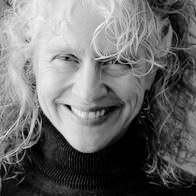A Review of Tracy Kidder’s Rough Sleepers
by BettyJoyce Nash
Pulitzer Prize winning author Tracy Kidder’s latest nonfiction book, Rough Sleepers, introduces readers to Boston’s homeless people through Dr. James O’Connell and his street team of medical professionals. Dr. Jim and his team make “house” calls. They travel in a supply-stocked van to parks, underpasses, streets, alleys, or ATM alcoves. Kidder met O’Connell in 2014 when he tagged along.
“I was struck by the relationships between this Harvard-educated ‘Doctor Jim’ and the people the van encountered . . . sleeping in doorways, arguing drunkenly with statues in parks. . . the night’s tour was a glimpse of a world hidden in plain sight.”
Kidder followed O’Connell for five years, off and on. He writes of “the visual irony of Newbury Street, with its art galleries, boutiques and cafés, where at night the usual people sleep in cardboard boxes and under the gray government surplus blankets . . . . The grate in the Brooks Brothers alley emits hot air and always draws tenants in the cold seasons. Three men from Guatemala and two from Mexico one night, and, on another, a longtime patient of Jim’s who looks and speaks like the headmistress of a boarding school.”
The title Rough Sleepers recalls the world of “homelessness” without assigning today’s pejorative label. The phrase dates from 19th century Britain when people streamed into cities from rural areas and lived in slums. Readers can almost picture Charles Dickens on one of his nighttime rambles through London. The homeless world Kidder describes feels Dickensian because it is.
Dr. Connell’s team finds and treats and tends homeless people like the individuals they are. He knows the cause is poverty. The disparity between rich and poor life expectancies can be 30 years. The homeless are more vulnerable to disease, and usually lack access to care. Plus, making good decisions must be tough when you’re cold, hungry, forlorn, maybe chronically, mentally, or physically ill or all three. As a 2023 Atlantic magazine headline proclaimed, in reviewing Matthew Desmond’s book, Poverty, by America: “The War on Poverty is Over: Rich People Won.”
Some of the poor and homeless people in Kidder’s book form their own community, even holding funerals or celebrations; sometimes they report back to Dr. Jim about friends. But homelessness is no picnic in the park. Rough Sleepers isn’t a policy paper or a prescription. The account reads like fiction. It immerses readers among humans we see but fail to notice and admit that they are us, or could be, under different circumstances. Today’s toxic brew of racism, income disparities, lack of investment in public housing plus tax and zoning codes that privilege gentrification, keep driving up rents and throwing up barriers to affordable housing.
Readers will meet characters like Tony Columbo, a big-hearted Italian whose childhood trauma, sometimes from grownups like a parish priest, have mired him in addiction and self-defeating behaviors. Kidder’s clear, detailed prose depicts homelessness from every angle, including the bureaucratic hurdles and snafus that crop up and can keep accommodations out of reach.
Today, the Boston Health Care for the Homeless Program employs 400 and serves 11,000 homeless people a year. Jim, the doctor, recalls times when “rough sleepers” remind him of the phrase “the living dead.” He cites the rare ‘Cotard’s delusion,’ a belief that “one is already dead, or doesn’t exist, or is putrefying, or has lost one’s blood and dinner organs.”
Yet here in these pages is Tony Columbo, though chronically homeless, a natural organizer and “people person.” He describes tools he uses to scavenge, including a glove with a rubberized palm for jumping down, and plucking a gold ring from the electrified third subway rail.
Details like this enliven Kidder’s pages, whether it’s Tony or John or Angie, who refused to mingle with others in the clinic’s waiting room. “‘It smells so bad down there. I got a weak stomach I guess. . . .’ She was also one of the old classics who insisted on being doctored only by Jim. She liked the other providers but refused their services.”
Every character’s backstory breaks your heart. Like this one:
“Angie’s dad had a drinking problem. She said her mother beat her routinely with kitchen implements. Angie’s route to homelessness had begun after one hateful year of high school followed by an early pregnancy, lots of drinking and a boyfriend with whom she joined the carnival. She had lived outdoors in Boston for 20 years with two different boyfriends. Both routinely beat her. Ten years ago, she had found a small single room with a bathroom down the hall. and stayed. . . five years ago, after her boyfriend died of cirrhosis, she decided to get sober. . . . but now her landlord was selling the building, which would be gutted and turned into condos.”
Housing is more complicated than medicine, Doctor Jim observes. “I wish we had a cocktail of drugs that would cure people of being homeless.”
The domestic comfort of a home. Is that too much to ask?


BettyJoyce Nash
BettyJoyce Nash’s novel, “Everybody Here is Kin” (Madville Publishing 2023), was shortlisted for the Eric Hoffer Prize. Her essays and short stories have appeared in Reckon Review; The Christian Science Monitor, North Dakota Quarterly, Broad River Review, Across the Margin, Writer’s Digest, and elsewhere. BettyJoyce earned an MSJ from Medill Journalism (Northwestern), and an MFA in fiction from Queens University of Charlotte. Her fiction has been recognized with fellowships from MacDowell, the Ragdale Foundation, the Tyrone Guthrie Center (Ireland,) and the Virginia Center for the Creative Arts. She teaches fiction at WriterHouse in Charlottesville; she’s also taught writing at the University of Richmond and the Albemarle-Charlottesville Regional Jail.

One response to “A World Hidden in Plain Sight”
Wonderful review—gives us the essence of Rough Rifers and so much more. I will definitely read this book now. Thank you,